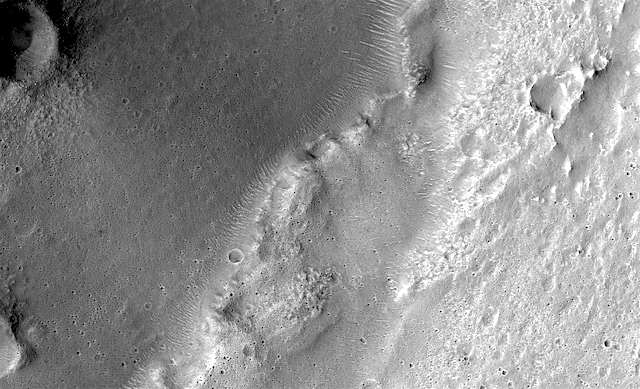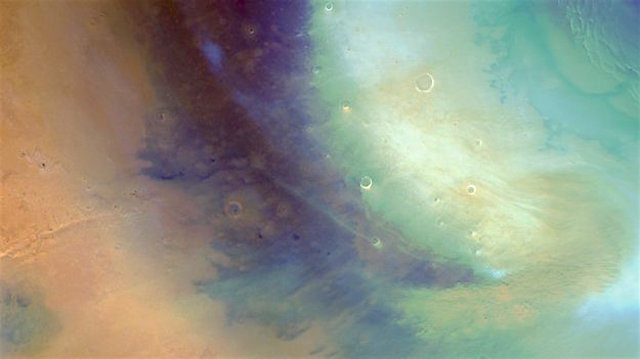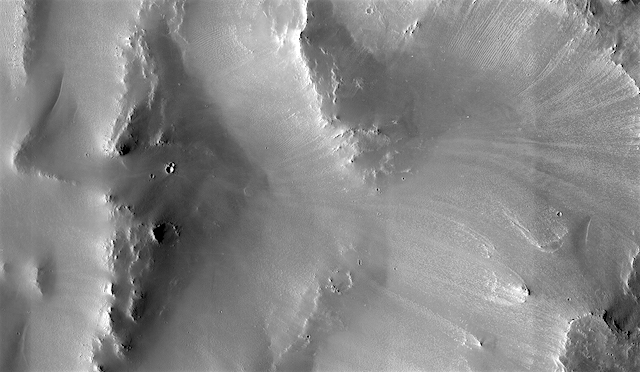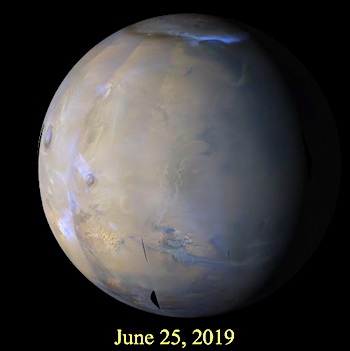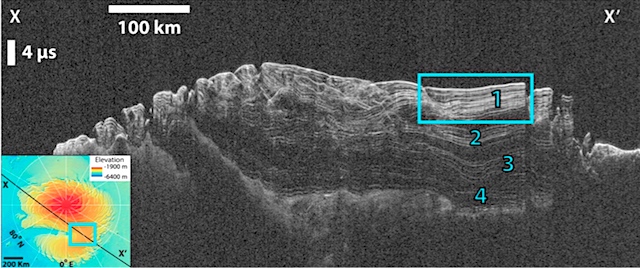 [Editor’s note: From a paper by Daniel Lalich and two co-authors recently published in the Journal of Geophysical Research.]
[Editor’s note: From a paper by Daniel Lalich and two co-authors recently published in the Journal of Geophysical Research.]
Radar Reflectivity as a Proxy for the Dust Content of Individual Layers in the Martian North Polar Layered Deposits
• Radar reflections can be used to constrain the dust content of individual layers in the north polar layered deposits of Mars
• Layer dust contents are higher than predicted by models, indicating a gap in our understanding of how the global dust cycle varies with time
• Dust content and completeness of the climate record vary strongly by location and with depth
The north polar cap of Mars is very similar to ice sheets on Earth. On Earth, scientists use the layers of ice to learn about how the climate has changed over time. It should be possible to do something similar on Mars, but we cannot drill ice cores on Mars, and so far, scientists have had difficulty pulling useful information out of the layers.
In this paper, we show that it is possible to use radar reflections in the ice to get a rough idea of how much dust is in a certain type of layer. The brightness of a reflection is related to the composition of the layer that caused it, so after making a few assumptions, we can first measure that brightness and then use a model to estimate how much dust would have to be present in the ice to get a matching reflection.
After doing this for many reflections at 10 different study sites, we found that some layers are a lot dustier than we previously believed, meaning our previous understanding of the Mars ice and dust cycles is incomplete. We also found that the composition of layers was very different from place to place, which means local conditions are playing a large role in ice and dust accumulation. [More at link]
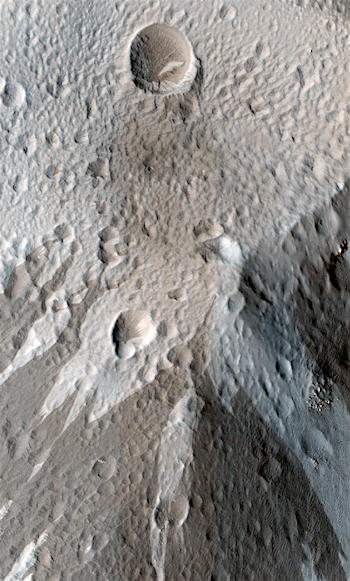 Triggered! A possible new impact site (formed at most between February 2004 and December 2011) is the likely cause of these slope streaks.
Triggered! A possible new impact site (formed at most between February 2004 and December 2011) is the likely cause of these slope streaks.









